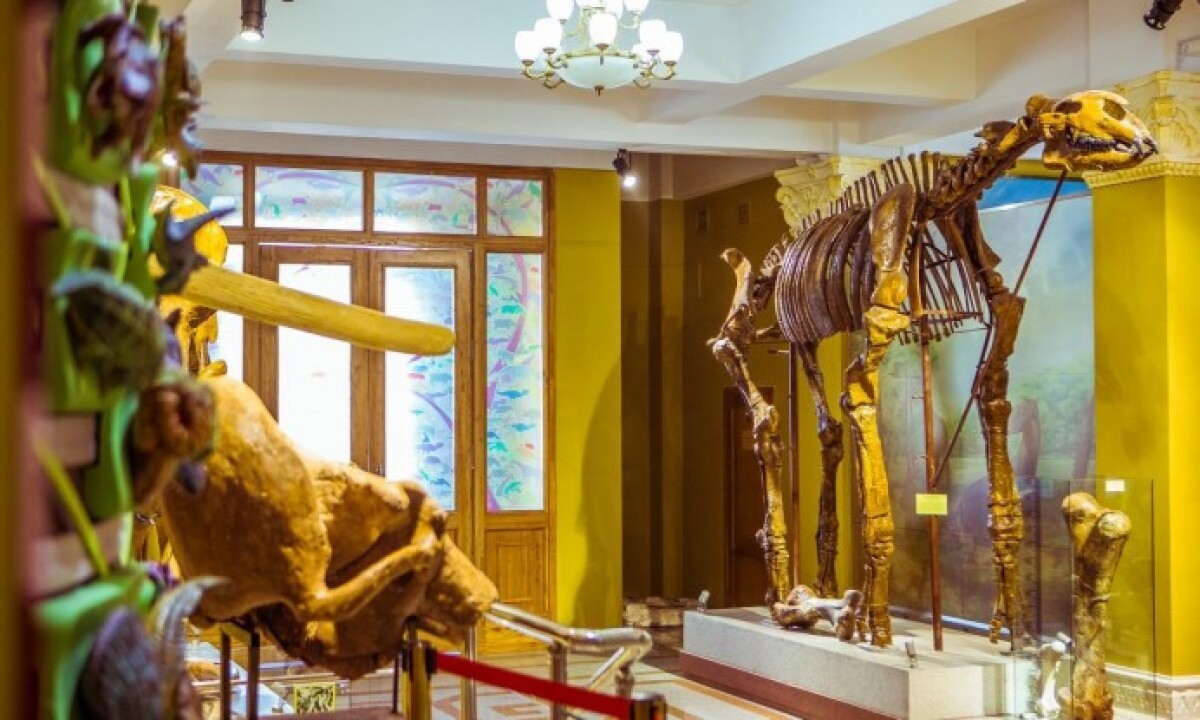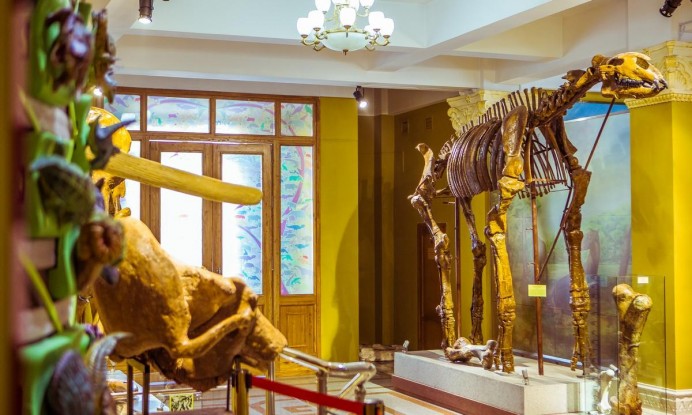

The history of each nation determines its own identity in a rapidly developing world. Development strategy of any country in the world is based on the understanding of the past, learning of its lessons. Each independent government unit is a separate component of the entire world order with its own model of development. To preserve the identity, states pay much attention on historical memory. Museums are the main keepers of state and national chronicle; they form a sense of belonging to the past, clearly demonstrate rich history of different civilizations and cultural heritage of their ancestors.
Modern museums in comparison with their predecessors have greatly expanded the scope of their activities, improved function, and their role has increased significantly. They not only represent the real authenticity of material evidence of different eras and recreate historical picture, but also serve as education and communication centers.
Museums of the RSE «Gylym Ordasy» of SC MES RK are among unique museums which by right are a pride of our country.
The building hosting the Museum of Nature, Museum of Archeology, Museum of Rear Books and Museum of History of Kazakhstan’s science is a historical heritage itself. It is one of the implemented projects of famous Russian architecture A.Schusev. Being one of the historical monuments of Kazakhstan’s architecture it is under the state protection. Grandiose architectural ensemble is designed to reflect the grandeur of human mind, the scale of scientific tasks in the country. Such great minds and leaders of Kazakhstan’s science as K. I. Satpayev, M. O. Auezov, D. A. Kunaev, Sh. Ch. Chokin worked here.
At the turn of epoch
History of some museums counts dozens of years. The oldest one, the Museum of Nature, was opened more than half a century ago. Its grand opening was in 1961. It was created with the aim to show the natural wealth of ancient geological eras.
After the museum became a part of the RSE «Gylym Ordasy» a new stage of its development, marked by embedding of modern technologies and making a designer decision in expositional process, had begun.
Today, the Museum of Nature consists of fossil and zoological collections, illustrating the changing of Kazakhstan’s nature from ancient times to present days. Paleontological exposition reflects the diversity and richness of Kazakhstan’s wildlife and geological past and represented by skeletons and remains of extinct animals, mainly collected in the territory of our state. Giant mammoths, rhinos and even dinosaurs are among them. But few people know that dinosaurs inhabited the land of Kazakhstan. The museum gives an opportunity for everyone to imagine the appearance and size of these animals.
Skeleton of a giant rhinoceros «indrykoterium " is a finding of the last century. 2012 was the 100th anniversary of the day of discovery of remains of this species in Torgay steppes. This huge animal was about 8 feet long and up to 5 meters in height, it made the Russian scientist Borisyak A.A. calling it «monster-beast». He lived in the forests and savannas of Asia in the Oligocene, about 30 million years ago. Today a copy of the skeleton adorns the Museum of Nature and receives increased attention from visitors.
Another one significant representative of the last century’s fauna is Tarbosaurus, a close relative of Tyrannosaurus Rex — carnivorous dinosaur that lived on the territory of Asia. In our republic, the skeletal remains of Tyrannosaurus Rex were found in the 70-ies of the last century.
«Golden fund» of the museum also keeps imprint of plants and petrified trunks of ancient trees.
Zoological exposition of collections of insects, wet preparations of worms and parasites, fish, different stuffed vertebrate animals living on the territory of Kazakhstan, occupies a special place.
Botagoz Kydyrmanova,
Senior Specialist of the RSE «Gylym Ordasy»
